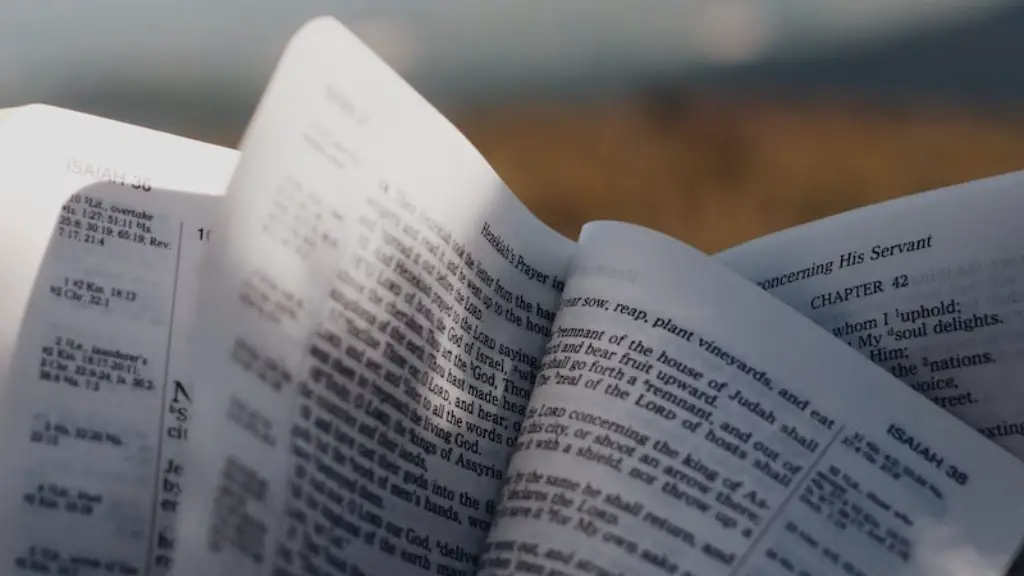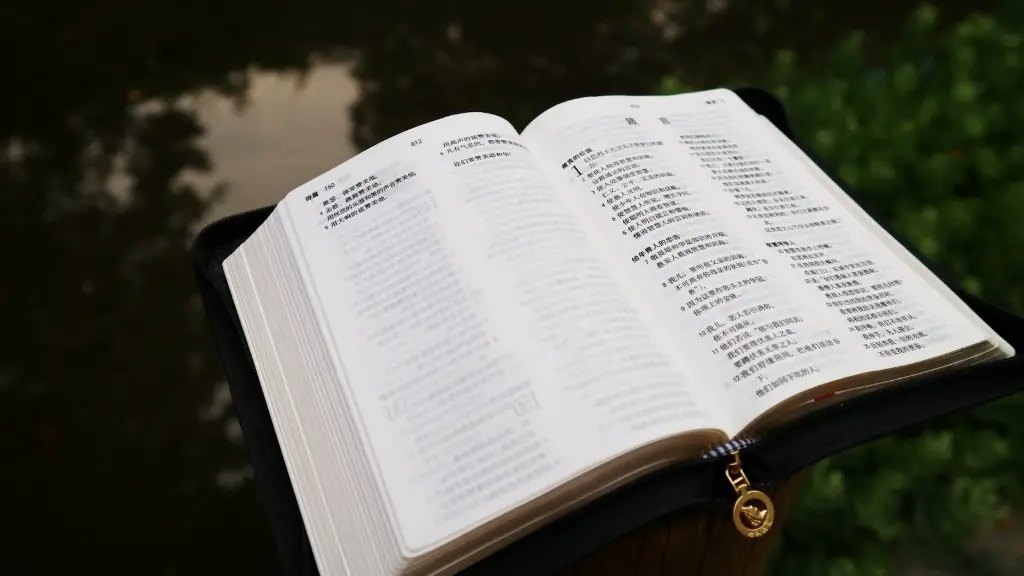Beyond The Basics – What Does MLA Bible Citation Entail?
Whether you’re a student, professor, or even a pastor, knowing how to cite the Bible in MLA format is an important skill. After all, much of the language and many of the ideas found in the Scriptures are cited in academic papers and theological literature every day. But citing the Bible can be much more complicated than just referencing the chapter and verse. In this article, we’ll take a look at the components that go into an MLA Bible citation, as well as how to properly format and cite the Bible in your work.
Author Information
The first component of an MLA Bible citation is to include the name of the author. For example, in the case of the King James Version of the Bible, you would include the name “King James”. While this is important, there are other authors to consider when citing the Bible in MLA. For example, if you’re citing one of the ancient documents that make up the Bible, you’ll need to include the specific author’s name. Additionally, depending on the text you’re referencing, you may also need to include the editor(s) or translator(s) of the work. The aim here is to accurately identify who is responsible for the work, which is an important part of MLA Style.
Citing The Source & Publication Details
The next component of an MLA Bible citation is to include the source and publication details. This includes the name of the book (for example, the book of Exodus), the version (such as the King James Version or the New International Version), the year published, and where it was published. This information is usually included in the first few pages of the Bible (e.g., the title page or a table of contents). However, if you are referencing a specific passage, don’t forget to include the chapter and verse numbers when citing the Bible in MLA.
Biblical Quotations In Your Work
When directly quoting from the Bible in your work, you must credit the passage to the source. To cite a passage, include the book and chapter, followed by a colon and the verse number. You should also include quotation marks around the passage. For example:
“For God so loved the world, that he gave his only begotten Son, that whosoever believeth in him should not perish, but have everlasting life” (John 3:16).
Accessibility of The Bible
One important thing to consider when citing the Bible is the accessibility of the Bible. For MLA citation, you should include the URL or DOI of the Bible if it’s available. This is especially important if you’re citing an online version of the Bible, as it will allow your readers to locate and view the passage you’re referencing.
Listing Your Sources
When you’ve finished citing the Bible, you must include a list of your sources at the end of your paper. This list should include all of the sources you cited within your paper and should be formatted according to the guidelines of MLA style. This includes all of the author information, publication details, and URLs or DOIs for each of the sources you cited.
Importance Of Citing The Bible
Learning how to cite the Bible correctly is an important part of academic and theological writing. Not only does it ensure that you are giving proper credit to the source of your information, but it also allows your readers to easily locate and view the passages you’re citing. Being able to properly cite the Bible in MLA style is a crucial skill for students, scholars, and anyone else who has the task of citing Biblical literature in their work.
References & Further Reading
Citing the Bible correctly is no easy task, but there are plenty of resources available to help you learn the process. The official MLA style guide is a great place to start. Additionally, there are several websites and books available on the topic of Bible citation. Here are some resources to help you get started:
• MLA Handbook for Writers of Research Papers: This helpful guide includes all the information you need to know about citing the Bible using the MLA style.
• How to Cite the Bible: MLA Style: This helpful website from the Purdue University Online Writing Lab provides a helpful overview of how to properly use MLA Bible citation.
• The Oxford Guide to Style: This comprehensive guide provides comprehensive guidance to all forms of written communication, including Biblical citation.
What Are The Benefits Of Learning How To Cite The Bible Mla?
Learning how to cite the Bible in MLA style is an important skill for anyone writing in the humanities or theology. By learning proper citation techniques, you will be better able to provide accurate credit to the source material and ensure that your readers have easy access to the passages you’re citing. Additionally, citing the Bible properly will demonstrate that you have a thorough understanding of the MLA citation style and will help to increase the credibility and professionalism of your work.
How Can I Learn MLA Citation?
There are a number of resources available to help you learn MLA citation. The official MLA Style Guide is a great place to start and will provide all of the information you need to get started. Additionally, there are several websites and books available on the topic of MLA citation. These resources can provide helpful guidance and step-by-step instructions for citing the Bible using the MLA style.
What Are The Limitations Of MLA Citation?
Like all citation styles, MLA has its limitations. For example, MLA citation does not provide a specific format for citing different versions of the Bible. Additionally, MLA does not provide specific guidelines for citing apocryphal books or other sources of Biblical information, such as commentaries and study guides. In these cases, it’s best to consult with your instructor or an academic librarian to determine the best way to cite the source material.
Tips For Citing the Bible In MLA Format
• Always include the name of the author or editor of the Bible you are citing, as well as the name of the version.
• When citing a passage from the Bible, include the book, chapter, and verse.
• Include the URL or DOI of the Bible if it’s available. This is especially important if you’re citing an online version of the Bible.
• Include a list of your sources at the end of your paper. This list should include all of the sources you cited within your paper and should be formatted according to the guidelines of MLA style.
• If you’re unsure of how to cite some of your sources, consult with your instructor or an academic librarian.



